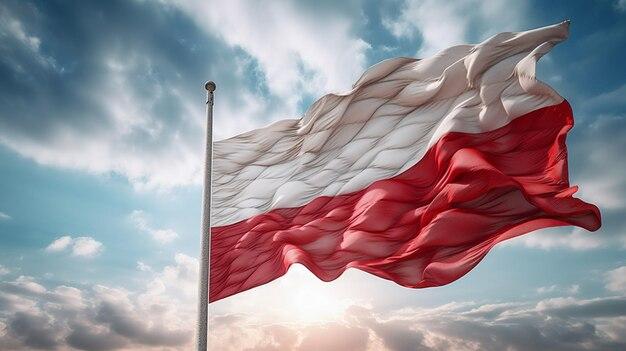The Renaissance, a period of extraordinary cultural and intellectual awakening that took place in Europe from the 14th to the 17th centuries, was a time of great artistic development. The term “Renaissance” comes from the French word meaning “rebirth,” signifying a renewed interest in the classical art and ideas of ancient Greece and Rome. This remarkable movement was particularly significant for two regions in Europe: the North and the South.
Although both the North and South experienced a flourishing of art during the Renaissance, there are distinct differences between their artistic styles and themes. The Northern Renaissance, centered around the thriving trading region of Flanders, encompassed modern-day Belgium, the Netherlands, and parts of France and Germany. The Southern Renaissance, based in Italy, focused on cities such as Florence, Rome, and Venice.
In this blog post, we will delve into the contrasting characteristics of Northern and Southern Renaissance art, exploring the subjects they depicted, the cultural influences that shaped their artworks, and the notable artists who left a lasting mark on this fascinating period of history. Join us as we discover the diverse and captivating expressions of artistic genius that emerged from these two distinctive regions during the Renaissance.

What Sets Northern and Southern Renaissance Art Apart?
In the vast world of art history, one topic that often piques curiosity is the difference between Northern and Southern Renaissance art. While both movements share common traits, they also diverge in fascinating ways. So grab your paintbrush and let’s delve into the artistic battleground of the Renaissance.
The Styles
When it comes to artistic styles, the Northern and Southern Renaissance couldn’t be more distinct. In the North, the emphasis was on intricate details and meticulous craftsmanship. The artists here, like Albrecht Dürer and Jan van Eyck, were like the master chefs of the art world, carefully adding ingredients to create a rich visual feast. Meanwhile, artists in the South, including Leonardo da Vinci and Michelangelo, embraced a more grandiose approach. They splashed their works with bold strokes and dramatic flair, making their canvases sing with emotion.
The Subjects
If the styles were the ingredients of a masterpiece, then the subjects were the delectable dishes themselves. In the North, artists focused on everyday life and realistic portrayals of landscapes, still lifes, and peasants. Think cozy scenes of farmers tending to their fields or merchants bartering their goods. In contrast, Southern Renaissance artwork was all about the big players: religion, mythology, and portraits of the influential elite. These artists aimed to capture the divine, telling stories of saints, depicting epic battles from ancient tales, and immortalizing the rich and powerful.
The Mediums
Like rival car dealerships, each region had its preferred medium. In the North, a mastery of oil paint became the go-to technique. This brought a richness and depth to the artwork, giving it an otherworldly glow. The Southern artists, on the other hand, were all about frescoes and sculptures. They chiseled away at stone and plaster, leaving their mark on the world for centuries to come. It’s like comparing a luxurious sports car to a gleaming marble statue – both stunning, but in vastly different ways.
The Influences
So, where did these artistic flavors come from? The Northern Renaissance drew inspiration from its cultural context – think religious reform, new scientific discoveries, and flourishing trade routes. With the advent of the printing press, ideas spread like wildfire, fueling a thirst for knowledge and innovation. Meanwhile, the Southern Renaissance basked in the opulence of the ancient Roman and Greek civilizations. The rediscovery of classical texts and ruins sparked a renewed interest in mythology, science, and the human form. It was like going to a costume party dressed as a Greek god, sandals and all.
Now, armed with this newfound knowledge, you can embark on your own artistic journey through the Northern and Southern Renaissance. Whether you’re drawn to the meticulous details of the North or the grandeur of the South, there’s no denying the impact these two movements had on the world of art. So go forth, appreciate the masterpieces, and perhaps even create some magic of your own. Happy painting!

FAQ: What is the Difference Between Northern and Southern Renaissance Art?
What Does the Word Renaissance Mean and Why is the Name Significant
The term Renaissance refers to a period of cultural and artistic rebirth that occurred in Europe between the 14th and 17th centuries. This era was marked by a renewed interest in the Classical civilizations of ancient Greece and Rome. The name itself, “Renaissance,” which means “rebirth” in French, is significant because it reflects the resurgence of interest and creativity during this time. The Renaissance was a time of immense intellectual and artistic growth, leading to groundbreaking advancements in various fields.
What Was a Thriving Trading Region Where the Northern Renaissance Began
The Northern Renaissance had its roots in the thriving trading region of Flanders, which encompassed parts of present-day Belgium, the Netherlands, and France. Flanders was a bustling hub of commerce and trade, attracting merchants and artists from all over Europe. This cosmopolitan environment fostered the exchange of ideas and cultural influences, leading to the development of the unique artistic style characteristic of the Northern Renaissance.
What is the Difference Between Northern and Southern Renaissance Art
Northern and Southern Renaissance art differ in many ways, primarily due to distinct cultural and geographic influences.
In terms of subject matter, Southern Renaissance art, centered in Italy, often focused on classical mythology, religious themes, and the glorification of the human form. On the other hand, Northern Renaissance art, predominantly from Flanders and Germany, placed more emphasis on detailed landscapes, daily life scenes, and religious domesticity.
Stylistically, Southern Renaissance art showcased the mastery of perspective, anatomical accuracy, and idealized beauty. In contrast, Northern Renaissance art demonstrated superb attention to meticulous details, intricate symbolism, and a naturalistic approach to representation.
What Did the Northern Renaissance Focus Their Paintings On
The Northern Renaissance painters primarily focused their paintings on capturing the beauty and intricacies of their immediate surroundings. They delighted in portraying Dutch landscapes, bustling market scenes, and intimate domestic settings. The Northern Renaissance artists were masters of rendering minute details, such as the play of light on the leaves of a tree or the textures of everyday objects. They were able to transform seemingly ordinary subjects into thought-provoking and visually captivating works of art.
What is the Importance of Studying Renaissance History
Studying Renaissance history is paramount for understanding the foundations of our modern world. The Renaissance era marked a pivotal shift from the Middle Ages to the modern era. It witnessed groundbreaking advancements in science, art, literature, and philosophy that laid the groundwork for the world we live in today. Exploring the Renaissance allows us to appreciate the immense contributions of brilliant minds, comprehend the cultural and intellectual transformations that occurred, and gain insights into the development of human society. Additionally, understanding the Renaissance enables us to appreciate the beauty and significance of art and its enduring impact on our lives.
What Was the Main Focus of the Renaissance
The main focus of the Renaissance was humanism. This intellectual movement emphasized the importance of human potential, rational thinking, and individualism. At its core, the Renaissance celebrated the idea that humans are capable of greatness, and it encouraged the pursuit of knowledge, artistic expression, and personal growth. The period saw a shift from the dominant religious perspective of the Middle Ages towards a human-centered approach that celebrated human achievements and sought to understand the world through reason and observation.
Who Influenced the Renaissance the Most
The Renaissance was influenced by a multitude of brilliant individuals and cultural movements. Some of the most influential figures include Leonardo da Vinci, whose scientific curiosity and artistic genius epitomized the spirit of the Renaissance; Michelangelo, renowned for his breathtaking sculptures and frescoes; and Johannes Gutenberg, whose invention of the printing press revolutionized the dissemination of knowledge.
Furthermore, the rediscovery of ancient Greek and Roman texts, thanks to the efforts of humanist scholars, played a pivotal role in shaping the Renaissance. The works of thinkers such as Plato, Aristotle, and Cicero provided a foundation for the revival of classical art, literature, and philosophy.
What Are Four Characteristics of the Renaissance
-
Humanism: The Renaissance emphasized the importance of human potential, individualism, and the celebration of human achievements.
-
Scientific Inquiry: The era witnessed a surge in scientific exploration and a shift towards observation and empirical evidence as essential tools for understanding the world.
-
Classical Influence: The Renaissance drew inspiration from the art, literature, and philosophy of ancient Greece and Rome, resulting in a revival of classical styles and ideas.
-
Secularism: The Renaissance saw a decreased emphasis on religion as the sole source of knowledge and morality, with a greater emphasis on worldly matters and the development of the individual.
In summary, the Northern and Southern Renaissance art differ in subject matter and style, reflecting the cultural and geographic influences of their respective regions. Studying Renaissance history is vital for understanding the foundations of our world today, and the main focus of the Renaissance was humanism. Influenced by brilliant individuals and cultural movements, the Renaissance showcased characteristics such as humanism, scientific inquiry, classical influence, and secularism.
